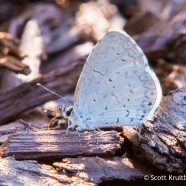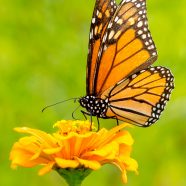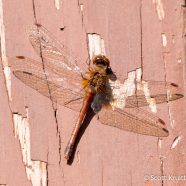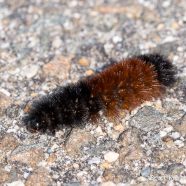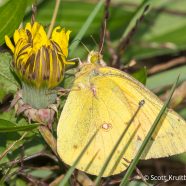Spring Azure
This was a midsummer sighting of what looks to be a Spring Azure (Celastrina ladon) butterfly though the scene had a much colder feel to it. The lepidoptera season is certainly ending this week…
Read MoreMonarch Butterfly
This is obviously a bit of a throwback to earlier this summer and yet another gorgeous Monarch (Danaus plexippus) butterfly enjoying some nectar in a garden. Have you seen any more Monarchs hurrying their way south in November? Considering how warm it has been in some areas there is still a chance to spot one or two here or there after having emerged recently, trying to elude the snow. Most of the Monarch butterfly population has already made their way to the wintering grounds in Mexico. Some of the species does overwinter in California, and counts will be conducted once again at many of...
Read MoreAutumn Meadowhawk
We are really at the end of the insect season now, and here was likely the last Autumn Meadowhawk dragonfly of the season for me last week. Our warm stretch allowed life to flourish a little longer than usual, a continuing impact of our changing climate. Each year we seem to be setting new records for the earliest spotted and latest recorded individuals of species of butterflies, birds, and sometimes even flowers. Scott Kruitbosch Conservation & Outreach Coordinator
Read MoreWoolly Bear Season
Yep, it’s that time again – here’s a Woolly Bear caterpillar (Pyrrharctia isabella) that I saw crossing the road last week. In this case I think we can say that its goal was definitely to get to the other side. If you have not encountered any of them before the old story goes that more extensive black covering the body means it will be a colder and snowier winter will be for us, and the more brown a caterpillar has the warmer it will be. This one seems like a relatively balanced individual, so maybe we will all end up happy this winter. Scott Kruitbosch Conservation &...
Read MoreStill Not Spring
It is not spring even though many Clouded and Orange Sulphur butterflies continue flying and feeding on nectar sources like this dandelion. Something that gives away the relative date of this photo is the low sun angle adding light from the side as we are less than two months from the winter solstice. You can also see a little bee mimic fly venturing into the flower, too.
Read More



